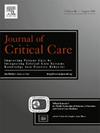在危重患者中持续输注β -内酰胺:全球实施的考虑。
IF 2.9
3区 医学
Q2 CRITICAL CARE MEDICINE
引用次数: 0
摘要
β-内酰胺类抗生素是危重患者感染经验性和针对性治疗中最常用的抗生素。及时给予有效剂量的β-内酰胺对于降低感染相关的发病率和死亡率至关重要。持续输注(CI) β-内酰胺类抗生素现在是一种循证策略,可优化感染重症患者的治疗。然而,β-内酰胺类CI的广泛实施需要考虑各种实际和药物相关因素。以下讨论了β-内酰胺类抗生素CI实施的障碍,包括对低资源环境的具体考虑,旨在为将证据转化为实践提供切实可行的解决方案。本文章由计算机程序翻译,如有差异,请以英文原文为准。
Continuous infusion of Beta-Lactams in the critically ill: Considerations for global implementation
β-lactam antibiotics are the most commonly used antibiotics for the empiric and targeted treatment of infection in the critically ill. Timely administration of an effective dose of β-lactams is critical to reduce infection-associated morbidity and mortality.
Continuous infusion (CI) of β-lactam antibiotics is now an evidence-based strategy to optimise treatment in critically ill patients with infection. However, the widespread implementation of CI of β-lactams requires consideration of various practical and pharmaceutical related factors.
The following addresses barriers to the implementation of CI of β-lactam antibiotics, including specific considerations for low resource settings, and aims to provide practical solutions for the translation of evidence into practice.
求助全文
通过发布文献求助,成功后即可免费获取论文全文。
去求助
来源期刊

Journal of critical care
医学-危重病医学
CiteScore
8.60
自引率
2.70%
发文量
237
审稿时长
23 days
期刊介绍:
The Journal of Critical Care, the official publication of the World Federation of Societies of Intensive and Critical Care Medicine (WFSICCM), is a leading international, peer-reviewed journal providing original research, review articles, tutorials, and invited articles for physicians and allied health professionals involved in treating the critically ill. The Journal aims to improve patient care by furthering understanding of health systems research and its integration into clinical practice.
The Journal will include articles which discuss:
All aspects of health services research in critical care
System based practice in anesthesiology, perioperative and critical care medicine
The interface between anesthesiology, critical care medicine and pain
Integrating intraoperative management in preparation for postoperative critical care management and recovery
Optimizing patient management, i.e., exploring the interface between evidence-based principles or clinical insight into management and care of complex patients
The team approach in the OR and ICU
System-based research
Medical ethics
Technology in medicine
Seminars discussing current, state of the art, and sometimes controversial topics in anesthesiology, critical care medicine, and professional education
Residency Education.
 求助内容:
求助内容: 应助结果提醒方式:
应助结果提醒方式:


